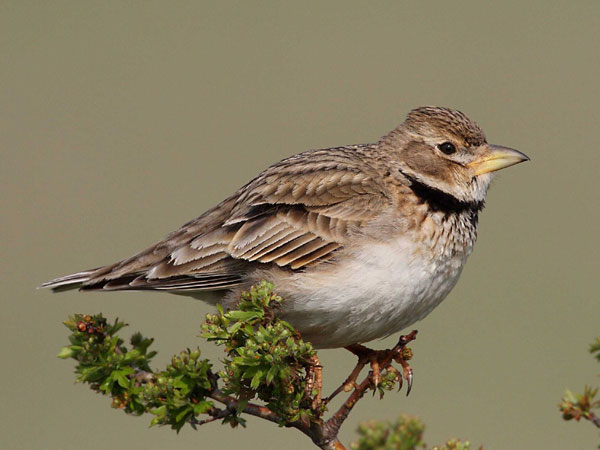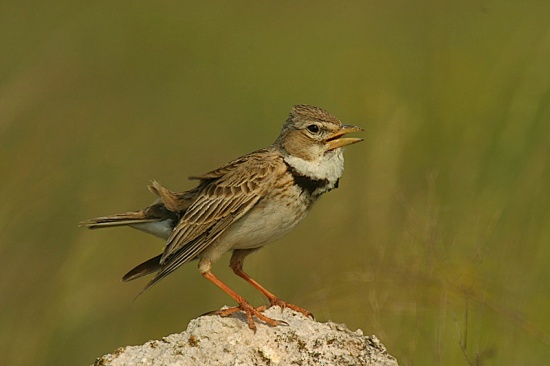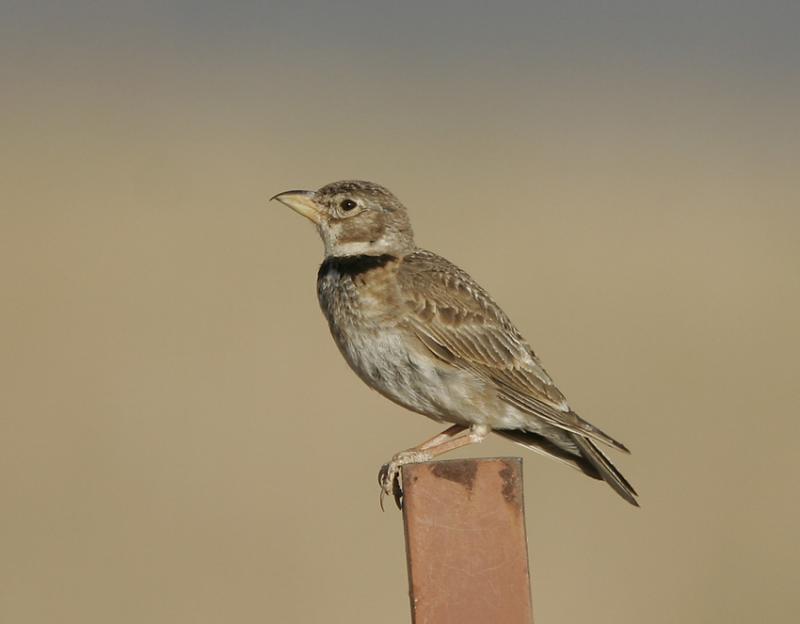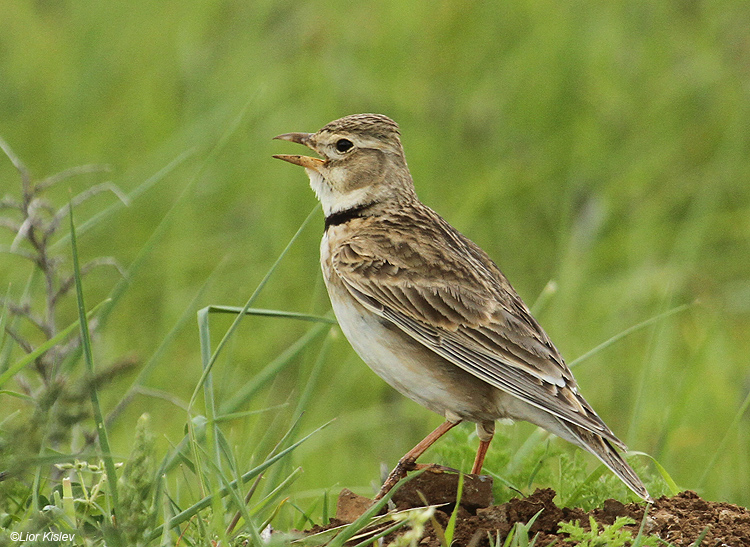
Melanocorypha calandra
TAXONOMY
Alauda calandra Linnaeus, 1766, Pyrenees.
OTHER COMMON NAMES
French: Alouette calandre; German: Kalanderlerche; Spanish:
Calandria Comъn.
PHYSICAL CHARACTERISTICS
7.1–7.5 in (18–19 cm); male 2.0–2.6 oz (57–73 g); female
1.8–2.2 oz (50–65 g); larger and stronger than skylark. Bill
conical and heavy. Upperparts brown and streaked, black
patches on each side of upper breast characteristic. Sexes alike.
DISTRIBUTION
North Africa, southern Europe east to Ural steppes, from Asia
Minor to central Asia, missing between Caspian Sea and Lake
Aral.
HABITAT
Open lowlands, steppe, grasslands, cultivated farmland, and
meadows.
BEHAVIOR
Resident in southern Europe, Near East, and North Africa,
migratory in Russia. Forms flocks of up to 2,500 individuals
autumn and winter; frequently associated with other larks and
corn bunting (Miliaria calandra). Male utters continuous song
from ground or perch. Song-flight performed in circles, ascending
in spirals. Several males often sing close together.
Song similar to skylark, contains imitations of other birds.
FEEDING ECOLOGY AND DIET
Diet changes from insects during summer to seeds in winter.
Bill used for digging.
REPRODUCTIVE BIOLOGY
Monogamous. Two broods April through June; both sexes
build cup-shaped nest, clutch size ranges from three to six
eggs, incubated by female, but brood patch also observed in
several males. Young hatch after 16 days; fed by both parents.
Leave nest after 10 days before being able to fly.
CONSERVATION STATUS
Not threatened, though population is declining in southern
Europe due to agricultural intensification and possibly hunting;
listed in Annex I of the European Birds Directive.
SIGNIFICANCE TO HUMANS
Hunted in the Mediterranean region.
Photo Gallery of - Calandra lark




 Animalia Life
Animalia Life